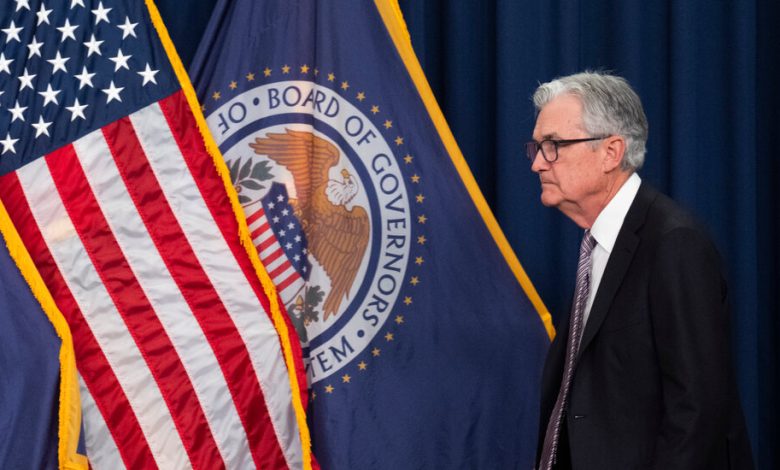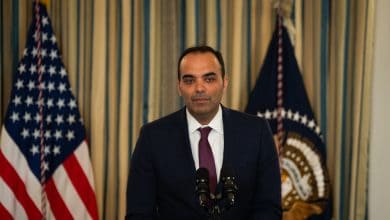Recession Fears Abound, but the Fed Chair Bets This Time Is Different

The Federal Reserve’s push to slow the economy and bring inflation under control is often compared to an airplane descent, one that could end in a soft landing, a bumpy one or an outright crash.
Jerome H. Powell, the Fed chair, is betting on something more akin to the Miracle on the Hudson: a touchdown that is gentle, all things considered, and unlike anything the nation has seen before.
The Fed has raised rates sharply over the past year, pushing them just above 5 percent on Wednesday, in a bid to cool the economy to bring inflation under control. Staff economists at the central bank have begun to forecast that America is likely to tip into a recession later this year as the Fed’s substantial policy moves combine with turmoil in the banking sector to snuff out growth.
But Mr. Powell made it clear during a news conference on Wednesday that he does not agree.
“That’s not my own most likely case,” he said, explaining that he expects modest growth this year. That sunnier forecast has hinged, in part, on trends in the labor market.
America’s job market is still very strong — with rapid job growth and unemployment hovering near a 50-year low — but it has shown signs of cooling. Job openings have dropped sharply in recent months, falling to 9.6 million in March from a peak of more than 12 million a year earlier. Historically, such a massive decline in the number of available positions would have come alongside layoffs and rising joblessness, and prominent economists had predicted a painful economic landing for exactly that reason.
But so far, unemployment has not budged.
“It wasn’t supposed to be possible for job openings to decline by as much as they have declined without unemployment going up,” Mr. Powell said this week. While America will get the latest update on unemployment when a job market report is released Friday, unemployment has yet to rise meaningfully.
Mr. Powell added that “there are no promises in this, but it just seems to me that it is possible that we can continue to have a cooling in the labor market without having the big increases in unemployment that have gone with many prior episodes.”
America’s economic fate rests on whether Mr. Powell’s optimism is correct. If the Fed can pull it off — defying history to wrangle rapid inflation by sharply cooling the labor market without causing a big and painful jump in joblessness — the legacy of the post-pandemic economy could be a tumultuous but ultimately positive one. If it can’t, taming price increases could come at a painful cost to America’s employees.
Some economists are skeptical that the good times can last.
“We haven’t seen this trade-off, which is fantastic,” said Aysegul Sahin, an economist at the University of Texas at Austin. But she noted that productivity data appeared glum, which suggests that companies got burned by years of pandemic labor shortages and are now hanging onto workers even when they do not necessarily need them to produce goods and services.
“This time was different, but now we are getting back to the state where it is a more normal labor market,” she said. “This is going to start playing out the way it always plays out.”
The Fed is in charge of fostering both maximum employment and stable inflation. But those goals can come into conflict, as is the case now.
Inflation has been running above the Fed’s 2 percent goal for two full years. While the strong labor market did not initially cause the price spikes, it could help to perpetuate them. Employers are paying higher wages to try to hang onto workers. As they do that, they are raising prices to cover their costs. Workers who are earning a bit more are able to afford rising rents, child care costs and restaurant checks without pulling back.
In situations like this, the Fed raises interest rates to cool the economy and job market. Higher borrowing costs slow down the housing market, discourage big consumer purchases like cars and home improvement projects, and deter businesses from expanding. As people spend less, companies cannot keep raising prices without losing customers.
But setting policy correctly is an economic tightrope act.
Policymakers think that it is paramount to act decisively enough to quickly bring inflation under control — if it is allowed to persist too long, families and businesses could come to expect steadily rising prices. They might then adjust their behavior, asking for bigger raises and normalizing regular price increases. That would make inflation even harder to stamp out.
On the other hand, officials do not want to cool the economy too much, causing a painful recession that proves more punishing than was necessary to return inflation to normal.
Striking that balance is a dicey proposition. It is not clear exactly how much the economy needs to slow to fully control inflation. And the Fed’s interest rate policy is blunt, imprecise and takes time to work: It is hard to guess how much the increases so far will ultimately weigh on growth.
That is why the Fed has slowed its policy changes in recent months — and why it appears poised to pause them altogether. After a string of three-quarter point rate moves last year, the Fed has recently adjusted borrowing costs a quarter point at a time. Officials signaled this week that they could stop raising rates altogether as soon as their mid-June meeting, depending on incoming economic data.
Hitting pause would give central bankers a chance to see whether their rate adjustments so far might be sufficient.
It would also give them time to assess the fallout from turmoil in the banking industry — upheaval that could make a soft economic landing even more difficult.
Three large banks have collapsed and required government intervention since mid-March, and jitters continue to course through midsize lenders, with several regional bank stocks plummeting on Wednesday and Thursday. Banking troubles can quickly translate into economic problems as lenders pull back, leaving businesses less able to grow and families less able to finance their consumption.
The labor market could be in for a more dramatic slowdown, given the bank tumult and the Fed’s rate moves so far, said Nick Bunker, the director of North American economic research at the job site Indeed.
He said that while job openings have been coming down swiftly, some of that might reflect a shift back to normal conditions after a bout of pandemic-inspired weirdness, not necessarily as a result of Fed policy.
For instance, job openings in leisure and hospitality industries had spiked as restaurants and hotels reopened from lockdowns. Those were now disappearing, but that might be more about a return to business as usual.
“A soft landing is happening, but how much of that is gravity and how much of it is what the pilot is doing with the plane?” Mr. Bunker said. Going forward, it could be that the normal historical relationship between declining job openings and rising joblessness will kick in as policy begins to bite.
Or this time truly could be unique — as Mr. Powell is hoping. But whether the Fed and the American economy get to test his thesis could depend on whether the banking system issues clear up, Mr. Bunker said.
“We might not get the answer if the financial sector comes and tips the table over,” he said.




